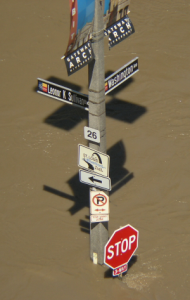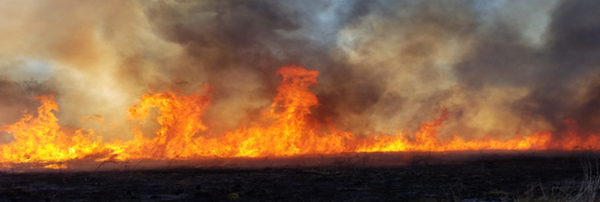What is Hazard Mitigation?

The term “mitigation” means to make less harsh or severe. Hazard mitigation activities are actions that can be taken to protect people and property from natural hazards such as floods, severe storms, and extreme temperatures.
What is the 2020-2025 St. Louis Regional Hazard Mitigation Plan?

The Plan presents information about natural disasters, levels of risk, and strategies for local governments and school districts to take to reduce the adverse effects of natural hazards including tornadoes, severe thunderstorms, severe winter or summer weather, flood, earthquake, dam failure, or wildfire. The goal of the purpose of the Plan is to identify the voluntary key actions and opportunities for each jurisdiction.
East-West Gateway worked with the city of St. Louis and the Missouri counties of St. Charles, Franklin, Jefferson, and St. Louis, as well as input from municipalities and school districts, to revise and update the St. Louis Regional Hazard Mitigation Plan for the next five years. There is a different planning process used in Illinois, and each county develops its own plan.
Why is the Plan important? Limited federal funding, for projects like flood buyouts and tornado safe rooms, is available to assist communities prepare for some natural disasters, and this funding is only available to communities and school districts that have adopted the plan by resolution passed by their local governing body.

The FEMA approved 2020-2025 St. Louis Regional Plan and appendices can be found at the links below:
-
- 2020-2025 St. Louis Regional Hazard Mitigation Plan
- Appendix A: Outreach
- Appendix B: Regional Profile, Demographics, and Critical Assets
- Appendix C: Hazard Events and Dam Inventory
- Appendix D: Jurisdiction Vulnerability Assessments
- Appendix E: Jurisdiction Action Strategies
- Sample resolution
- Approval Letter from FEMA – October 9, 2020
- All documents (zip file)
Plan Development and History
Originally developed in 2004 with funding from Missouri’s State Emergency Management Agency (SEMA), the St. Louis Regional Hazard Mitigation Plan is reviewed and revised every five years. The 2020 plan covers 135 municipalities, and 50 school districts and has been significantly revised to reflect both changing conditions and local efforts to focus on regional collaboration. Planning partners included the St. Louis Area Regional Response System (STARRS), county emergency managers, municipal league representatives, the St. Louis Area Regional Coalition of Community Organizations Active in Disaster (SLARCC), and EducationPlus. East-West Gateway prepared the plan in accordance with guidelines established by the Federal Emergency Management Agency (FEMA) and SEMA. These agencies have authority for the final review and approval of the plan.
Plan Goals
- Prevent loss of life and minimize injury or illness as a result of natural disaster
- Preserve and maintain property, infrastructure, business, and community vitality
- Encourage future growth that is compatible with strategies to mitigate future natural disasters.
The planning process strives to accomplish the following:
- Foster resilient communities that are prepared for natural disasters
- Reduce or avoid losses as a result of natural disasters
- Identify cost effective actions to reduce risk from natural disasters and a strategy to implement those actions
- Focus resources on the greatest risks and vulnerabilities
- Provide a coherent plan as a basis for individual community action
- Build partnerships by involving people, organizations, and businesses
- Increase education and awareness of hazards and risk
- Communicate local priorities to state and federal officials
- Align risk reduction with other community objectives
Plan Adoption for Municipalities and School Districts
Current rules require that local governments and school districts applying for federal pre-natural disaster mitigation funding must have a FEMA approved plan. Any community or school district seeking pre-natural disaster mitigation funding must formally adopt the plan by resolution in order to be eligible for FEMA/SEMA funding.
Governing bodies of counties, municipalities, and schools districts can use this model adoption resolution prepared by EWG staff when adopting the final plan. Plan adoption by Missouri communities and school districts is on a voluntary basis and EWG staff encourages jurisdictions to adopt the plan.

